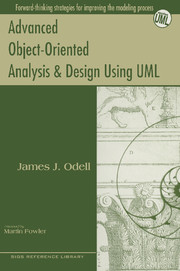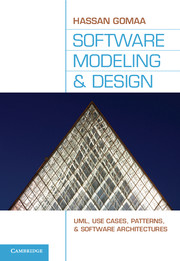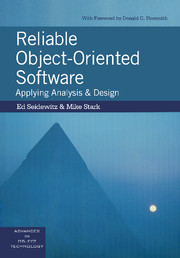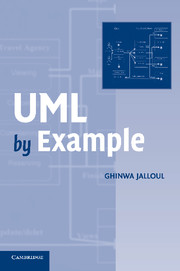Advanced Object-Oriented Analysis and Design Using UML
This 1998 book conveys the essence of object-oriented programming and software building through the Unified Modeling Language (UML). Composed of updated versions of James Odell's articles from The Journal of Object-Oriented Programming, ROAD, and Object Magazine, it provides concise but in-depth pieces on structural issues, dynamic issues, business rules, object complexity, object aggregation, design templates, and the process of objects.
- Author is co-chair of the Object Management Group's Object Analysis and Design Task Force
- Introduces the notions of multilevel meta-modeling, structural constraints, power types, and business rules to OO design and analysis
- A collection of his most important work from JOOP, ROAD, and Object Magazine, updated to reflect the implementation of UML
Reviews & endorsements
"These pages contain the essence of what it is to understand the world as objects and build software based on that understanding. You will be able to come back to these articles time and again, gaining new layers of understanding as you gain layers of experience." Kent Beck
"There is certainly good information in this book, and it is presented well. This book should be useful to those seriously interested in object-oriented analysis and design (OOAD)...." Computing Reviews
Product details
February 1998Paperback
9780521648196
262 pages
228 × 153 × 16 mm
0.355kg
Available
Table of Contents
- Part I. Structural Issues:
- 1. Modeling objects: using Binary- and Entity-relationship approaches
- 2. Object types as objects and vice versa
- 3. Power types
- 4. Specifying structural constraints
- 5. Toward a formalization of OO analysis
- Part II. Dynamic Issues:
- 6. What is object state?
- 7. Dynamic and multiple classification
- 8. Events and their specification
- 9. Approaches to finite-state machine modeling
- Part III. Business Rules:
- 10. Business rules
- 11. Using rules with diagrams
- Part IV. Object Complexity:
- 12. Managing object complexity, Part I: classification and generalization
- 13. Managing object complexity, Part II: aggregation
- Part V. Object Aggregation:
- 14. Six different kinds of aggregation
- 15. A foundation for aggregation
- 16. A user-level model of aggregation
- Part VI. Design Templates:
- 17. From analysis to design using templates, Part I
- 18. From analysis to design using templates, Part II
- 19. From analysis to design using templates, Part III
- Part VII. The Process of Objects:
- 20. Method engineering
- 21. User workshop techniques
- 22. Object-oriented methodologies.








